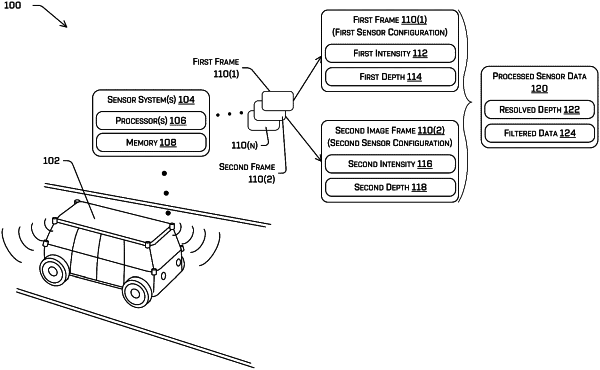| CPC G06T 7/521 (2017.01) [B60W 60/00272 (2020.02); G01B 11/22 (2013.01); G01S 17/894 (2020.01); G01S 17/931 (2020.01); G06T 2207/10028 (2013.01); G06T 2207/30241 (2013.01); G06T 2207/30252 (2013.01)] | 20 Claims |

|
1. A vehicle comprising:
a time-of-flight sensor;
one or more processors; and
memory storing processor-executable instructions that, when executed by the one or more processors, configure the vehicle to perform operations comprising:
receiving first depth information and first intensity information generated by the time-of-flight sensor, the first depth information being based, at least in part, on a first modulation frequency of the time-of-flight sensor;
receiving second depth information and second intensity information generated by the time-of-flight sensor, the second depth information being based, at least in part, on a second modulation frequency higher than the first modulation frequency;
determining, based at least in part on the first depth information, a plurality of first candidate depths for a surface;
determining, based at least in part on the second depth information, a plurality of second candidate depths for the surface;
determining, based on the plurality of first candidate depths and the plurality of second candidate depths, a disambiguated depth for the surface;
determining that the disambiguated depth is greater than a nominal maximum sensor depth associated with the time-of-flight sensor operating at the first modulation frequency;
determining, from at least one of the first intensity information or the second intensity information, an intensity associated with the surface; and
determining, based at least in part on the disambiguated depth being greater than the nominal maximum sensor depth and the intensity being equal to or greater than a threshold intensity, that an actual depth of the surface is beyond the nominal maximum sensor depth of the time-of-flight sensor operating at the first modulation frequency.
|